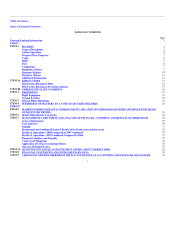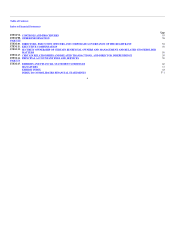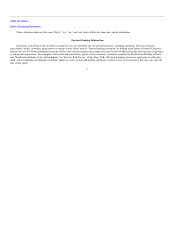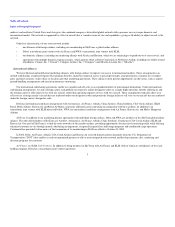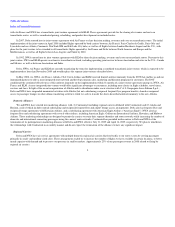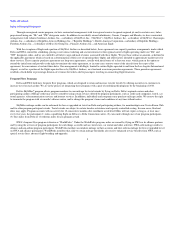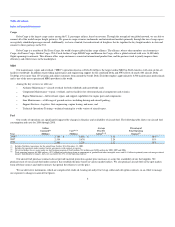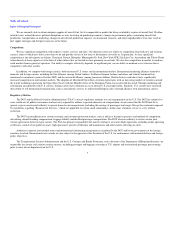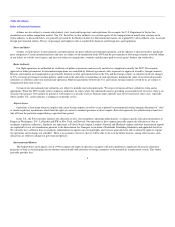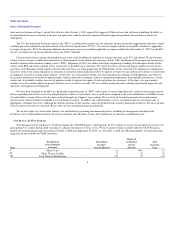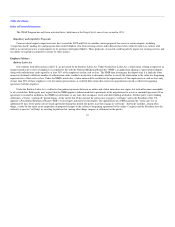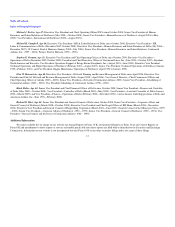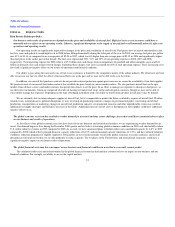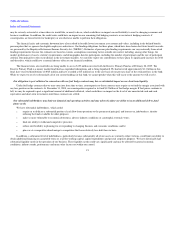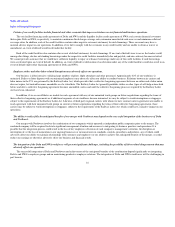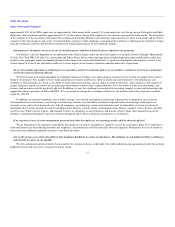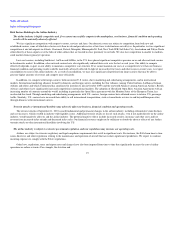Delta Airlines 2008 Annual Report Download - page 14
Download and view the complete annual report
Please find page 14 of the 2008 Delta Airlines annual report below. You can navigate through the pages in the report by either clicking on the pages listed below, or by using the keyword search tool below to find specific information within the annual report.
Table of Contents
Index to Financial Statements
local noise restrictions on Stage 3 aircraft first effective after October 1, 1990, require FAA approval. While we have had sufficient scheduling flexibility to
accommodate local noise restrictions in the past, our operations could be adversely impacted if locally-imposed regulations become more restrictive or
widespread.
The U.S. Environmental Protection Agency (the "EPA") is authorized to regulate aircraft emissions and has historically implemented emissions control
standards previously adopted by the International Civil Aviation Organization ("ICAO"). Our aircraft comply with the existing EPA standards as applicable
by engine design date. ICAO has adopted additional aircraft engine emissions standards applicable to engines certified after December 31, 2007, but the EPA
has not yet proposed a rule that incorporates these new ICAO standards.
Concern about climate change and greenhouse gases may result in additional regulation of aircraft emissions in the U.S. and abroad. We may become
subject to taxes, charges or additional requirements to obtain permits for greenhouse gas emissions. In July 2008, the European Union approved legislation to
include aviation in their emissions trading system ("ETS"). Beginning in 2012, any airline with flights originating or landing in the European Union will be
subject to the ETS and will be required to buy a permit for its greenhouse gas emissions. We expect that such a system will impose significant costs on our
operations in the European Union. Similar cap and trade restrictions are being proposed in the United States. In the event that U.S. legislation or regulation is
enacted or in the event similar legislation or regulation is enacted in other jurisdictions where we operate or where we may operate in the future, it could result
in significant costs for us and the airline industry. At this time, we cannot predict whether any such legislation or regulation would apportion costs between
one or more jurisdictions in which we operate flights, which could result in multiple taxation or permitting requirements from multiple jurisdictions. Certain
credits may be available to reduce the costs of permits in order to mitigate the impact of such regulations on consumers. At this time, we cannot predict
whether we or the aviation industry in general will have access to offsets or credits. We are carefully monitoring and evaluating the potential impact of such
legislative and regulatory developments.
We have been identified by the EPA as a potentially responsible party (a "PRP") with respect to certain Superfund Sites, and have entered into consent
decrees regarding some of these sites. Our alleged disposal volume at each of these sites is small when compared to the total contributions of all PRPs at each
site and liability at many of these sites has been resolved through our Chapter 11 proceedings. We are aware of soil and/or ground water contamination
present on our current or former leaseholds at several domestic airports. To address this contamination, we have a program in place to investigate and, if
appropriate, remediate these sites. Although the ultimate outcome of these matters cannot be predicted with certainty, management believes that the resolution
of these matters will not have a material adverse effect on our consolidated financial statements.
We are also subject to various other federal, state and local laws governing environmental matters, including the management and disposal of
chemicals, waste and hazardous materials, protection of surface and subsurface waters, and regulation of air emissions and drinking water.
Civil Reserve Air Fleet Program
We participate in the Civil Reserve Air Fleet program (the "CRAF Program"), which permits the U.S. military to use the aircraft and crew resources of
participating U.S. airlines during airlift emergencies, national emergencies or times of war. We have agreed to make available under the CRAF Program a
portion of our international range aircraft from October 1, 2008 until September 30, 2009. As of October 1, 2008, the following numbers of our international
range aircraft are available for CRAF activation:
Stage
Description of
Event Leading to
Activation
International
Passenger
Aircraft Allocated
Number of
Aeromedical
Aircraft
Allocated
Total
Aircraft by
Stage
I Minor Crisis 15 N/A 15
II Major Theater Conflict 37 22 59
III Total National Mobilization 139 35 174
9


